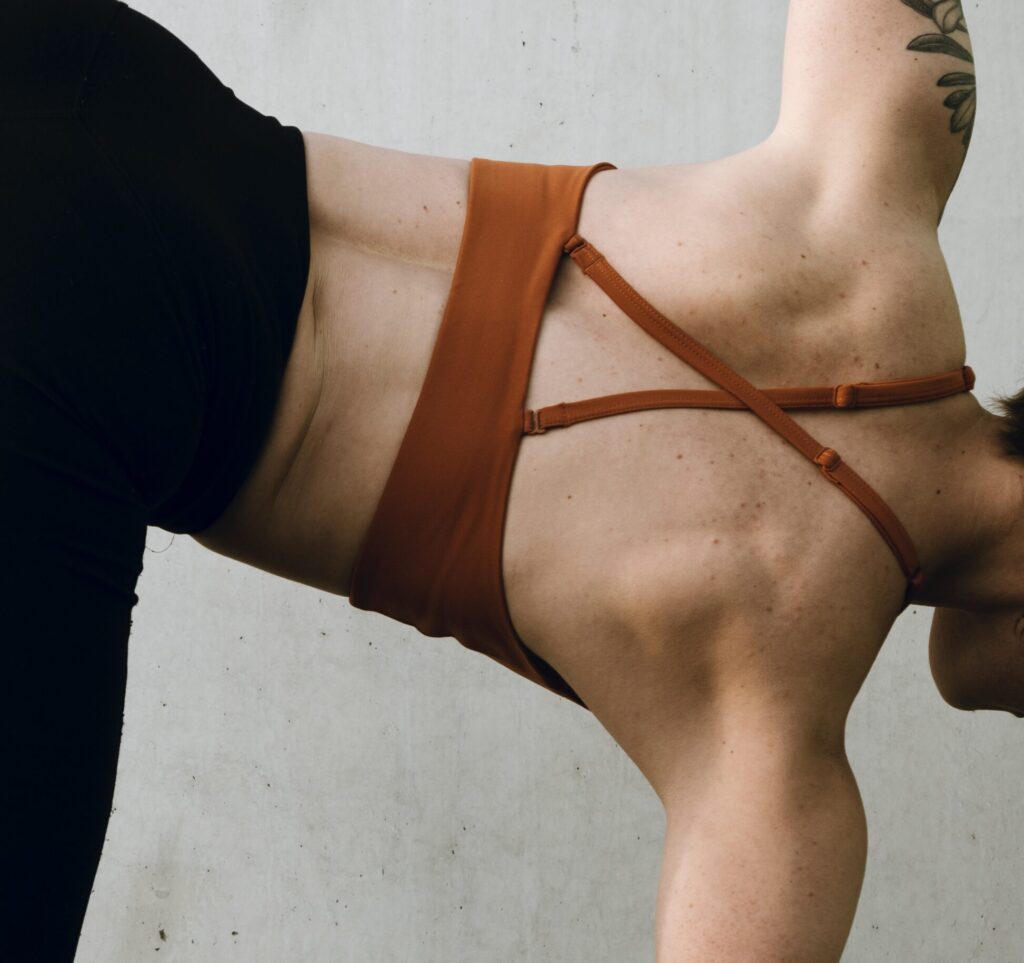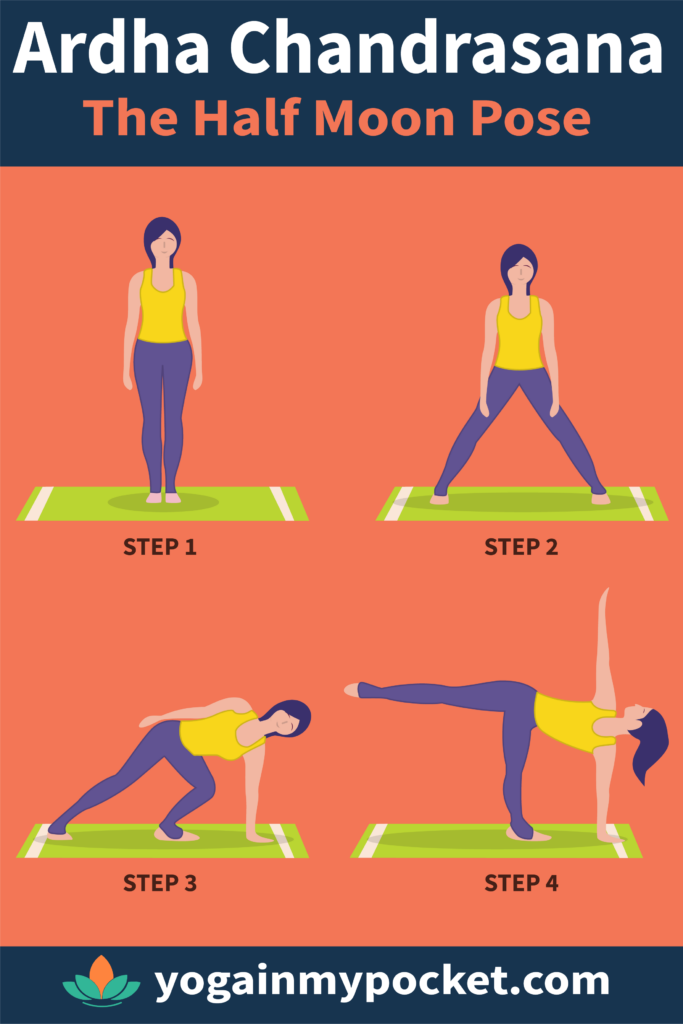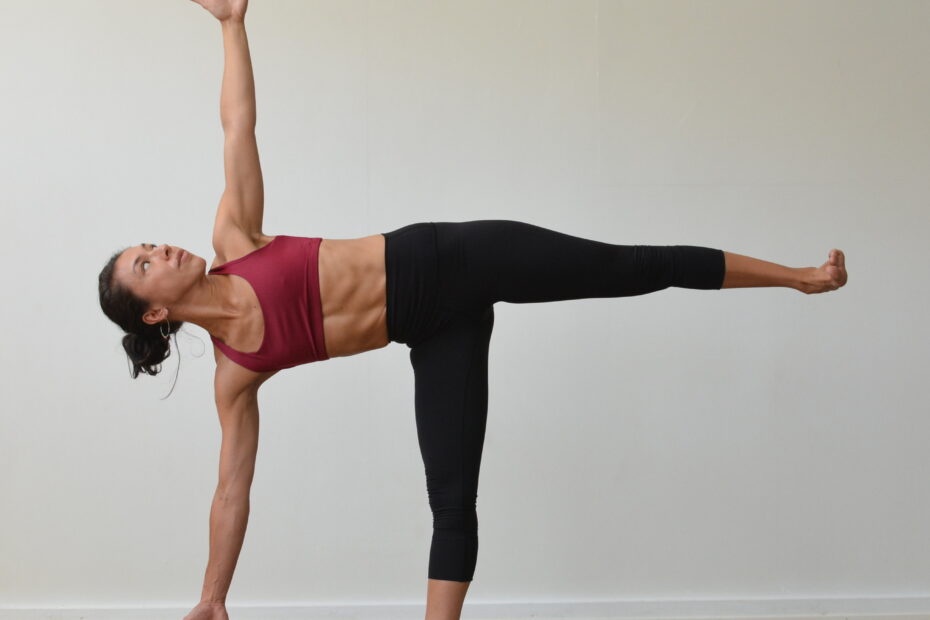This Exercise Nourishes Your Hips, Hamstrings, Calf Muscles & Spine
Remember how a good stretch of your limbs immediately relieves your cramped muscles after sitting for a long time in one position. The Ardha Chandrasana or the Half Moon Pose builds upon this instinctive motion of standing up stretching your limbs and rotating your hip.
In this asana (posture), you start from a normal standing posture to finally reach a posture where you are using one hand and one leg to support yourself, while your other leg and arm are up in the air.
How to Do the Ardha Chandrasana Posture

The easiest way to learn this posture is to stand near a staircase. Depending on your height, position yourself about one foot away from the lowest step. The ideal starting point is to stand one leg’s length away from the staircase. But decide this distance depending on your comfort and confidence. Now spread your legs so that they form an inverted V. At this stage, breathe normally and be comfortable.
Now stretch out your arms so that they are held at right angles to your torso. Ask a partner to stand behind you and support you at your hip to prevent yourself from losing your balance. Gradually tilt your hip sideways towards the staircase and rest the arm that is towards the staircase on the step that is easiest for you to reach and place your palm on. In case you feel that you cannot reach the step with your arm, then move closer to the staircase and start again.
After you rest your palm on the step, stiffen the muscles of your legs and lift your leg that is away from the staircase to bring it as high as you comfortably can. Ideally your leg should be perpendicular to your other leg that is placed firmly on the floor. Now move your arm that is away from the staircase and bring it in a vertical position, so that both your arms are aligned in a straight line.
Many who do this exercise for the first time may feel that they are about to lose their balance when they lift their leg. So ask a partner to be beside you to support you by holding your hip from behind. If need be, another partner can support you from the front, so you will not fall on either side. You may also use a small stool or a block to rest your hand instead of being near a staircase.
Some beginners also use ropes to hold their upraised arm and foot. Some use a prop on a wall and place their foot on the wall while resting their arm on a block. Learning to do this posture against a wall can also be helpful as you can then support yourself by resting your back and hip against the wall.
As you become comfortable doing this exercise by placing your palm on a stair, you may gradually start placing your palm on the lowest stair and finally on the floor. You are now in the half moon posture. You may pause at this position for some time and then come out of it. Now you may repeat this cycle of movements using the other arm and leg.
How to Come Out of the Ardha Chandrasana Posture
While you are still learning to do this exercise, ask your partner to hold your hip, as you gradually move your upraised foot to rest it on the floor. After this, lift your palm that is resting on the stair and stand erect. Once you master doing this exercise, then the movement and hand and foot can be almost simultaneous while coming out of this posture.

Benefits of the Ardha Chandrasana Posture
This posture teaches you to bend without straining your hip. Bending forward from your hip is a bad bending posture and it gradually leads to hip and back related ailments like osteoporosis, sciatica and slipped discs. By doing this exercise, you make your hip supple. This posture also stretches your hamstrings, calf muscles, groin and spine. You also acquire better coordination and confidence while balancing yourself. As your shoulders, spine chest, thighs, buttocks and ankles are stretched, they receive better blood circulation and are nourished. For women this exercise can also relieve menstrual pain.
A Word of Caution
Those who suffer from postural vertigo, spondylitis, sciatica or any other hip, neck or back related ailment should avoid doing this exercise. The point is to start doing this exercise before you are afflicted by these ailments and stay healthy to avoid them.
Do consult your doctor before starting to do this asana and have your yoga teacher to help you out when you learn to do this exercise.
To derive comprehensive benefits from the different yoga exercises, do this exercise along with other yoga exercises like Bhujangasana, to improve your metabolism and digestion, the Akarna Dhanurasana along with the Normal Naukasana to make your back supple and to stimulate insulin secretion.
